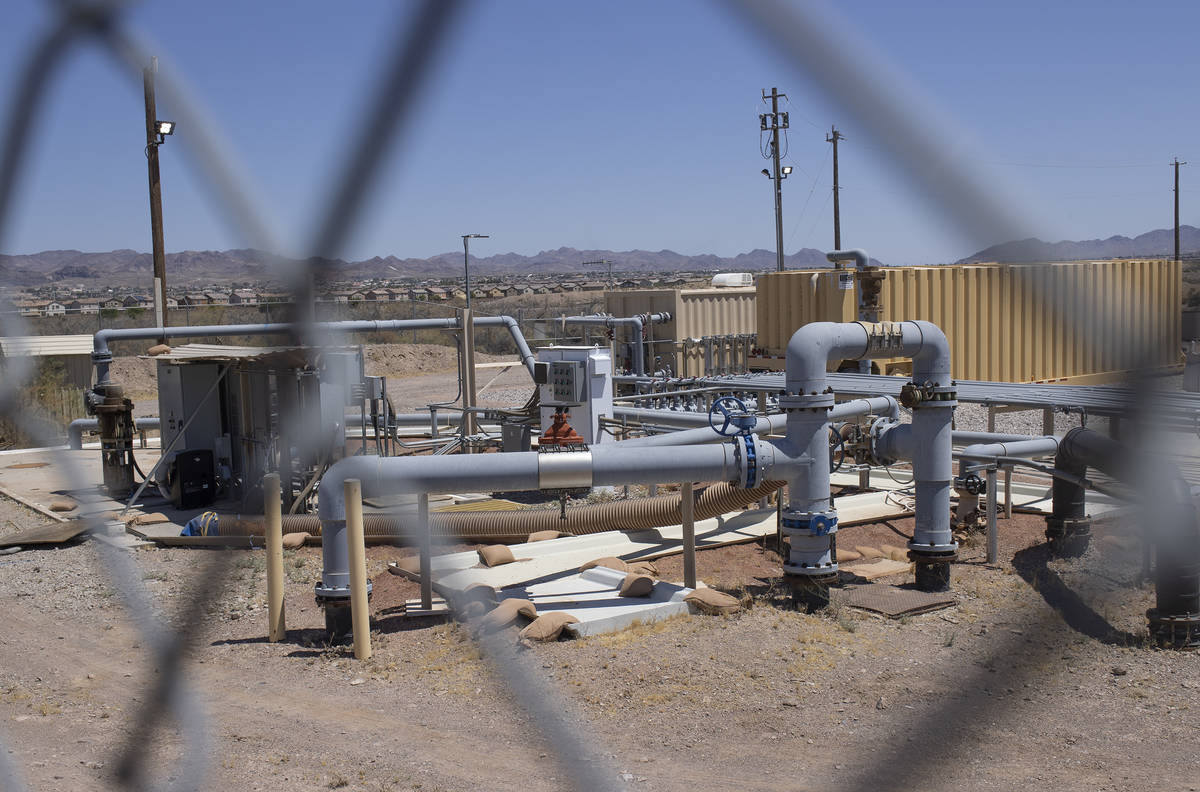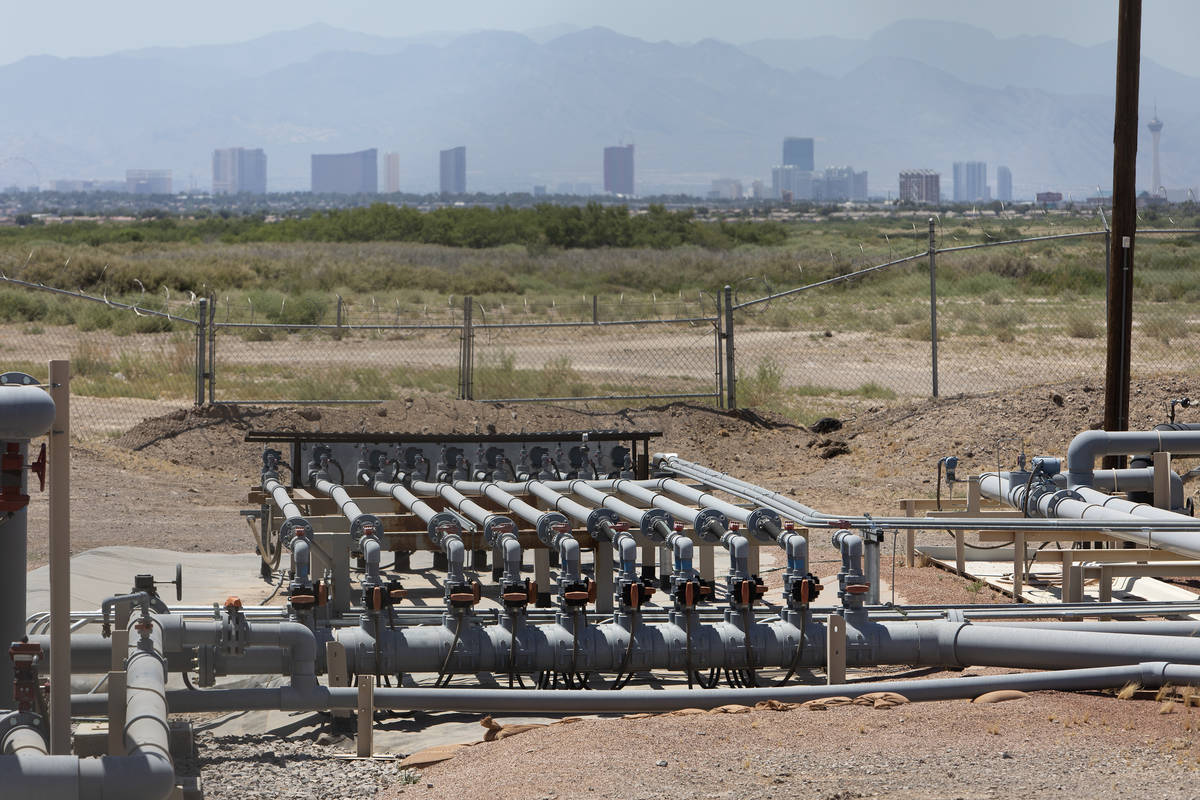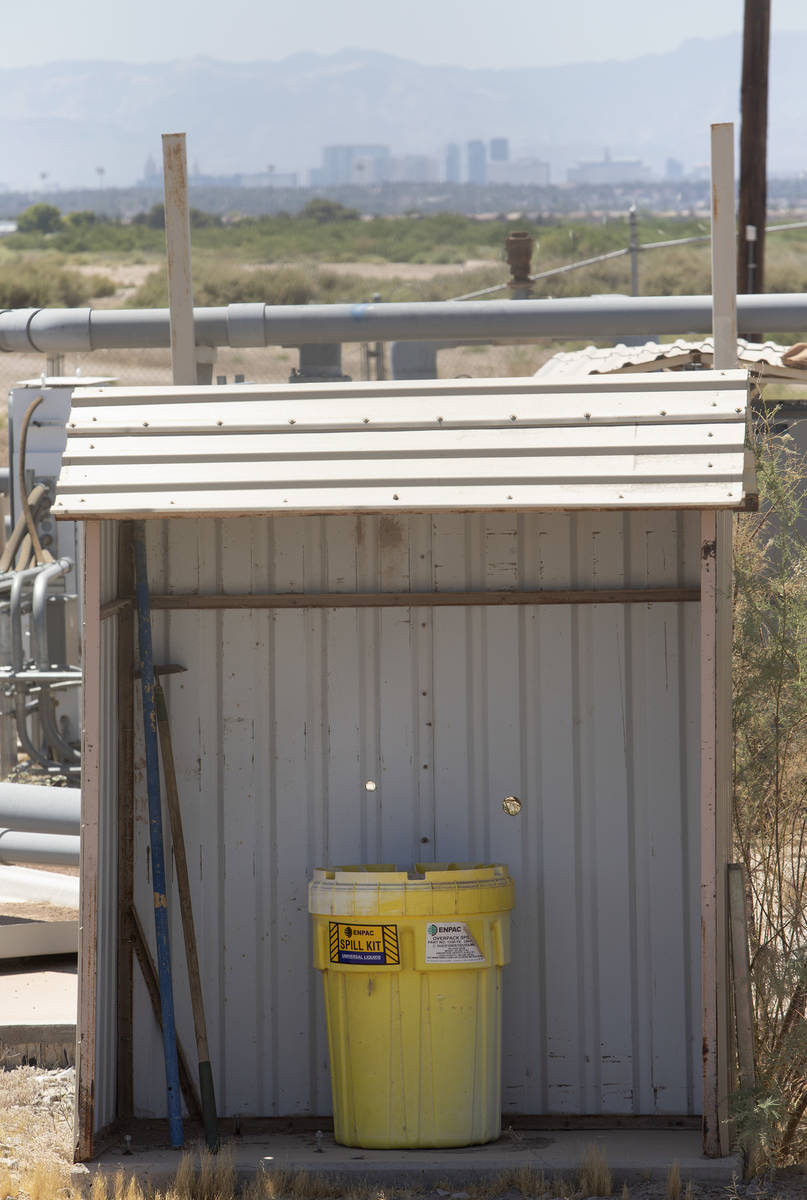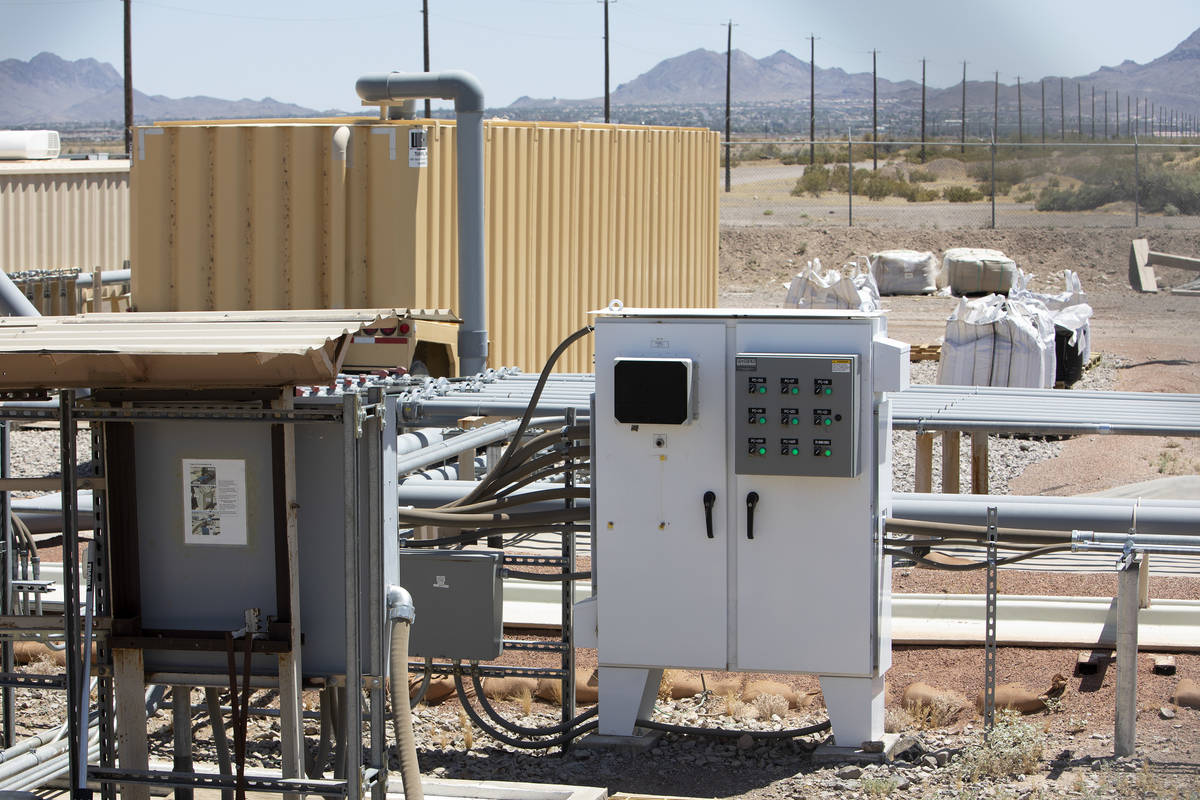Chemical in Nevada drinking water won’t be regulated despite dark past
A chemical with a notorious legacy in Nevada will not be regulated in drinking water, but the decision by the U.S. Environmental Protection Agency should not result in any decline in drinking water standards for Southern Nevadans, state officials say.
Thursday’s decision by the EPA not to regulate perchlorates, which can impair thyroid function and harm infant brains, came long after the chemical became an issue in Southern Nevada.
Perchlorates were produced for explosives and rocket fuel in Henderson from the 1950s to the 1990s. In 1988, a massive explosion at the PEPCON plant manufacturing the chemical rocked the Las Vegas Valley, killing two and injuring hundreds.
Decades of accumulation in the water table was detected in the Las Vegas Wash in 1997, when cleanup efforts were launched by both the companies that had produced ammonium perchlorate and the state. In the years since, researchers have found that concentrations of perchlorate in the Las Vegas Valley’s water source were below dangerous levels for humans.
Cleanup a success story
The past 20 years of cleanup efforts have been a huge success, according to Greg Lovato, administrator at the Nevada Division of Environmental Protection, and now perchlorate contamination is well below any state’s drinking water standard. The concentration of perchlorates in Lake Mead have decreased from 15 parts per billion in 1997 to 0.4 ppb in 2020. One ppb is equivalent to a drop of water in an Olympic-size swimming pool.
Lovato said that the EPA’s decision probably will not affect perchlorate cleanup in Nevada. Nevada’s cleanup efforts are well-supported and successful, especially after 2014, when the state received $1.1 billion in a bankruptcy settlement.
“We have our own cleanup goals and standards for Nevada,” Lovato said. Any additional standards set by the EPA would not have changed the state’s plans, he added.
Before the decision, the EPA was considering a maximum contaminant limit of 56 ppb, well above Nevada’s levels even in 1997 at 15 ppb. Last week’s decision is a reversal on the Obama administration position that the chemical poses a risk to human health and occurs in drinking water at levels that warrant public concern.
The EPA issued a Drinking Water Health Advisory in 2008 of 15 ppb, which is not enforceable by law. The agency determined that exposure to perchlorates at this level for more than 30 days would not cause harmful effects. State regulations range from 6 ppb in California to 2 ppb in Massachusetts.
Because the Colorado River provides drinking water to parts of California and Arizona, Nevada’s agency takes its impact on other states seriously. “We aren’t only trying to protect Lake Mead,” Lovato said. “We’re also trying to protect the downstream users.”
The drinking water available in the Las Vegas Valley is considered to be safe for drinking, according to Bronson Mack, spokesman for the Southern Nevada Water Authority.
Lake Mead meets all of the drinking water standards of the federal Safe Drinking Water Act, Mack said. The SNWA independently monitors drinking water contaminants and has most recently reported 0.6 ppb of perchlorate in Lake Mead.
Risks possible elsewhere
Levi Kamolnick, state director of Environment Nevada, said the lack of regulation is concerning, as it fits with a pattern of deregulation in the Trump administration.
“In an ideal world the EPA should be constantly looking at new findings and looking at new ways to protect people from toxic chemicals,” he said. “That’s technically their job.”
Kamolnick said he is concerned about more than just Nevadans. Perchlorate levels are being managed in Nevada, but they may not be in other states.
Lovato expressed similar concerns, though he said he is not aware of other areas that might be at particular risk. “There may be situations where (other states) don’t have the level of resources that we have,” he said. “If perchlorate is threatening a vulnerable drinking water source or a well, not having a regulation for perchlorate could put that drinking water system and everyone around it in a little bit of a difficult situation.”
Though the state has successfully reduced perchlorate levels in Nevada drinking water by 100-fold, the Environmental Protection Division is planning for perchlorate treatment and management in the future.
J.D. Dotchin, chief of the Bureau Industrial Site Cleanup at the division, said that the past 20 years of cleanup have been in response to an emergency action and that they are still in the investigation phase of the cleanup effort. Dotchin oversees much of the state’s perchlorate remedial efforts.
The division still is investigating the extent of the problem and assessing the risks of perchlorate contamination and other contaminants. Dotchin said he expects those efforts to be completed in 2021, when they will plan for long-term remedial efforts. The process will involve exploring new methods and technology for treatment and management. He said the agency probably will install new contaminant management systems in 2025.
“This is a long process, but we want to make sure we get it right,” Dotchin said. “You can get 95 percent of perchlorate out of Lake Mead, but that last 5 percent is the hard part.”
Marina Philip is a 2020 Mass Media reporting fellow through the American Association for the Advancement of Science. Email her at mphilip@reviewjournal.com. Follow her on Twitter at @mureeenuh.


























